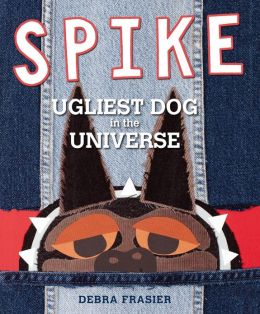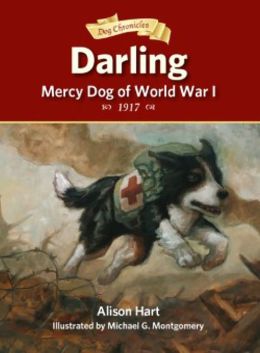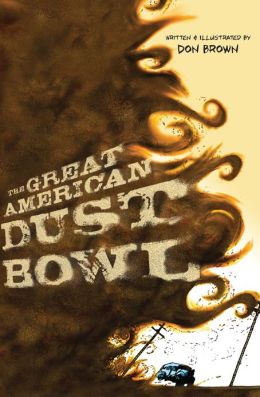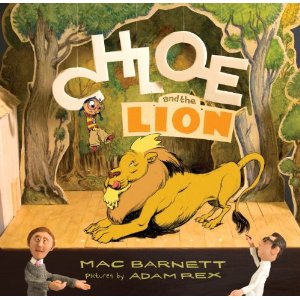During World War I, Great Britain and other European countries used dogs at the battlefront. Many dogs are loyal and smart, have keen eyesight, and an excellent sense of smell. They can be trained for many useful purposes. In the war, most dogs were used for carrying messages, but some were trained
to be Red Cross “Mercy Dogs.”
Training for dogs deemed fit for service took place over a period of about six weeks. They were trained to heel, to sit, and to stay silent. Using their sense of smell and vision, Mercy Dogs were trained to search for wounded soldiers, return to their handlers and then lead emergency workers to the soldier. They carried medical supplies and water so that those who were conscious could begin treatment. The dogs were trained to ignore dead soldiers. Mercy Dogs were used only in World War I since their services were not needed when armies stopped trench warfare. However, dogs continue to be trained today in the military to perform such tasks as searching for explosives and drugs.
Darling: Mercy Dog of World War I (written by Alison Hart, illustrated by Michael G. Montgomery; Peachtree, 2013) is part of the series “Dog Chronicles.” Middle graders will be fascinated by the dogs and will learn a great deal of history as well. Next in the series is Murphy: Gold Rush Dog.
From the time she was a little girl, Helen Keller loved dogs. Growing up deaf and blind, Helen Keller’s dogs were a window to the world. When Annie Sullivan entered Helen’s life, her world went from “darkness into the light.” In fact, Helen Keller learned thirty words the first day of Sullivan’s breakthrough using the technique of finger spelling and experience. Helen even tried to teach her dog Belle how to finger spell.
Helen Keller and Annie Sullivan are featured in Helen Keller’s Best Friend Belle (written by Holly M. Barry, illustrated by Jennifer Thermes; Whitman, 2013).
Award-winning author and artist Debra Frasier brings us Spike, the Ugliest Dog in the Universe (Simon & Schuster, 2013). The story shows the young reader that courage, loyalty, and intelligence are much more important that appearance. Frasier’s art is composed of paper, used clothing, and worn blue jean pieces. You have to see it to believe it!
Poet Meg Kearney and Caldecott Honor artist E. B Lewis combine their talents in Trouper (Scholastic, 2013), the story of a rescued shelter dog who is passed by for adoption because he has only three legs. Based on a true rescue story--Wilma Snyder.
to be Red Cross “Mercy Dogs.”
Training for dogs deemed fit for service took place over a period of about six weeks. They were trained to heel, to sit, and to stay silent. Using their sense of smell and vision, Mercy Dogs were trained to search for wounded soldiers, return to their handlers and then lead emergency workers to the soldier. They carried medical supplies and water so that those who were conscious could begin treatment. The dogs were trained to ignore dead soldiers. Mercy Dogs were used only in World War I since their services were not needed when armies stopped trench warfare. However, dogs continue to be trained today in the military to perform such tasks as searching for explosives and drugs.
Darling: Mercy Dog of World War I (written by Alison Hart, illustrated by Michael G. Montgomery; Peachtree, 2013) is part of the series “Dog Chronicles.” Middle graders will be fascinated by the dogs and will learn a great deal of history as well. Next in the series is Murphy: Gold Rush Dog.
From the time she was a little girl, Helen Keller loved dogs. Growing up deaf and blind, Helen Keller’s dogs were a window to the world. When Annie Sullivan entered Helen’s life, her world went from “darkness into the light.” In fact, Helen Keller learned thirty words the first day of Sullivan’s breakthrough using the technique of finger spelling and experience. Helen even tried to teach her dog Belle how to finger spell.
Helen Keller and Annie Sullivan are featured in Helen Keller’s Best Friend Belle (written by Holly M. Barry, illustrated by Jennifer Thermes; Whitman, 2013).
Award-winning author and artist Debra Frasier brings us Spike, the Ugliest Dog in the Universe (Simon & Schuster, 2013). The story shows the young reader that courage, loyalty, and intelligence are much more important that appearance. Frasier’s art is composed of paper, used clothing, and worn blue jean pieces. You have to see it to believe it!
Poet Meg Kearney and Caldecott Honor artist E. B Lewis combine their talents in Trouper (Scholastic, 2013), the story of a rescued shelter dog who is passed by for adoption because he has only three legs. Based on a true rescue story--Wilma Snyder.











 Leave it to Jarrett Krosoczka to come up with the idea of a mystery with a platypus as a policeman. A platypus is funny in and of itself; making it the star of a wacky crime story takes the humor potential even higher. Lunch Lady fans can rejoice because Krosoczka has developed another winning hero in Rick Zengo. Zengo has to prove himself to his partner, veteran policeplatypus Corey O'Malley, but evenutally Zengo tracks the clues and runs down the villains to solve the case of The Frog Who Croaked. Longer and more text heavy than the Lunch Lady series, Platypus Police Squad is an excellent bridge book for kids who love graphic novels and are ready for a slightly more challenging reading than LL. The action is fast-paced but gentle. The police use boomerangs and the thieves are dealing in synthetic fish. The story would make a great family read aloud. Don't miss The Frog Who Croaked, and be on the lookout for future entries in the Platypus Police Squad series--Lucinda Whitehurst.
Leave it to Jarrett Krosoczka to come up with the idea of a mystery with a platypus as a policeman. A platypus is funny in and of itself; making it the star of a wacky crime story takes the humor potential even higher. Lunch Lady fans can rejoice because Krosoczka has developed another winning hero in Rick Zengo. Zengo has to prove himself to his partner, veteran policeplatypus Corey O'Malley, but evenutally Zengo tracks the clues and runs down the villains to solve the case of The Frog Who Croaked. Longer and more text heavy than the Lunch Lady series, Platypus Police Squad is an excellent bridge book for kids who love graphic novels and are ready for a slightly more challenging reading than LL. The action is fast-paced but gentle. The police use boomerangs and the thieves are dealing in synthetic fish. The story would make a great family read aloud. Don't miss The Frog Who Croaked, and be on the lookout for future entries in the Platypus Police Squad series--Lucinda Whitehurst.





 Yaqui Delgado Wants to Kick Your Ass! The title grabs your attention, then the story wins your heart. Meg Medina takes a different direction with her newest title, a contemporary story with none of the magical elements found in her other novels, such as the lyrical The Girl Who Could Silence the Wind (Candlewick, 2012). Yaqui is a bully and Piddy is her victim, but one strength of this amazing book is the characterization. We get to glimpse Yaqui's frustrations as well as Piddy's responses. Refreshingly, the adult characters are as fully-realized as the YA protagonists. Piddy is by no means perfect, but she does not deserve the treatment she receives. Following her path as she avoids school, lies to teachers, lashes out at her mother, and seeks comfort with a boyfriend allows us to see parts of life many people keep hidden. Medina writes with feeling and honesty. She offers hope for targeted teens, as well as insight into their tormentors--Lucinda Whitehurst.
Yaqui Delgado Wants to Kick Your Ass! The title grabs your attention, then the story wins your heart. Meg Medina takes a different direction with her newest title, a contemporary story with none of the magical elements found in her other novels, such as the lyrical The Girl Who Could Silence the Wind (Candlewick, 2012). Yaqui is a bully and Piddy is her victim, but one strength of this amazing book is the characterization. We get to glimpse Yaqui's frustrations as well as Piddy's responses. Refreshingly, the adult characters are as fully-realized as the YA protagonists. Piddy is by no means perfect, but she does not deserve the treatment she receives. Following her path as she avoids school, lies to teachers, lashes out at her mother, and seeks comfort with a boyfriend allows us to see parts of life many people keep hidden. Medina writes with feeling and honesty. She offers hope for targeted teens, as well as insight into their tormentors--Lucinda Whitehurst. 



























